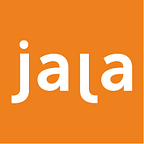Emojis as a universal language: Should we be worried?
“How do you turn on a computer?” I quizzed a group of adult students. They were enrolled in my computer class as part of a skills training school for migrant workers.
One student shrugged, while another obsessively checked the plugs. Someone blurted out a random term, “Uh, use the motherboard?” No one knew what that meant or why the switch didn’t even work.
It might seem truly basic for us now and obvious to many millennials and digital nomads of today. However, we may all have a vague inkling of how difficult it can be when we first encounter a new device.
In my computer class, I recall how it took time for everyone to familiarise themselves with the QWERTY keyboard design, or search for the Start button.
Yet ask anyone in the room about Facebook and they will show you their active social media pages on their phones with ease, as they adeptly tap away to share their latest selfies with accompanying emojis and memes — certainly better maintained than my almost-obsolete social media accounts.
Maybe not everyone knows how to use a computer — but thanks to mobile phones, everyone has access to online and fast communication, cutting across all age, class, geography and ethnicity.
Not only is access more immediate, communication and self-expression are made even faster and easier through the combination of words and images on our mobile phones.
But as easier connection allows messages with shortened texts that may even be replaced by images like emojis, should we be concerned that the language we use to communicate will change forever? Is it for better or worse?
From emoticons to emojis
On our computers and simpler phone models using short messaging services (i.e.: Nokia), we were first exposed to emoticons – a creative pictographic representation that combines different available typographic characters, such as: :D. If we felt more imaginative, we could create anything from a nerdy smiley ( “:B” ) to one that wears a turban ( “@:)” ).
Today, as our phones continue to be upgraded with the latest operating systems, we use ideogrammic images to express ourselves more visually: 😀, 🤓, 👳🏾♂.
These ideograms in our online messages have come to be termed as emojis (Japanese: 絵, e “picture” + 文字, moji “character”). Used as a kind of communication shorthand, an emoji can express one’s feelings, personality, and mood in ways some words can’t.
Emojis are also not only used in the English-speaking world. Regardless of the language you speak, a “😂” emoji can reveal how a matter is laughable, meanwhile “😞” tells us it’s not. We are able to express the same emotion through the same emoji. Some emojis have even incorporated more inclusive skin colours and sexual orientations: 👩🏽, 🧕🏼,👭, 👬.
Even if our digital devices 📱 might be limited to only a number of set emojis, we are able to combine words and images in ways where we have more agency to be creative with conveying our feelings.
In the world of texting, an entire sentence (e.g. “That’s so delicious”) can thus be summarised with a single emoji (“🤤”). Some businesses like Domino’s Pizza have also created marketing campaigns using emojis so that they can be understood globally. And we haven’t even talked about stickers and GIFs.
In some parts of the world, our way of using emojis and texting have ignited the emergence of new subcultures. In Manila for instance, a friend shared with me how a pop culture phenomena that emerged in the early 2000s called “Jejemon” was centered on the way of typing and subverting the English language.
Similarly, the way we speak and write have been inspired by emojis. The facepalm emoji (“🤦”) for instance has been used in writing (“#facepalm”) as a form of interjection to express embarrassment.
Emojis: 👍🏽 or 👎🏽?
The internet as we experience it feels completely vast and limitless, like the physical universe we live in. As we feel our way through this digital universe, the possibilities for more linguistic innovations will not cease.
It would, however, be an extreme to say that emoticons will replace our non-visual language, as words can clarify and elaborate an emotion, even if they do not pinpoint that exact emotion. Words, images and especially our intended emotions, work in collaboration to send our desired message.
While some might lament the end of the English language and proper grammar, emojis could and have had a positive effect in making communication inclusive — by dismantling language and class barriers and bridging gaps. It even connects different age groups — older generations and youths alike use emojis, without having the need to know a generation-specific lingo to stay connected.
It was something I could appreciate in my computer class. Because even without the computer, it was clear that everyone could still share the experience of reacting to global content where the rules of space and time are bent, shortened and abstract.
Emojis will not spell the end of a language. If anything, such development inspires us to rethink how we write and speak creatively, to anyone from anywhere. As a simple signifier, an emoji offers the opportunity to say so much with very simple yet inventive and amusing ways.
Written by Liani MK
